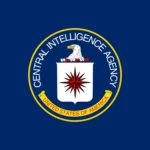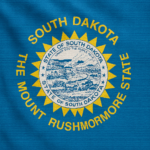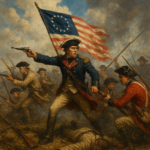
Nestled deep within the Nevada desert, approximately 75 miles north of Las Vegas, lies one of the most enigmatic and highly speculated locations on Earth: Area 51. For decades, this secretive United States Air Force facility has been shrouded in mystery, fueling countless conspiracy theories and captivating the imaginations of millions. From whispers of crashed UFOs and extraterrestrial technology to its unwavering reputation for impenetrable security, Area 51 has become synonymous with government secrets and advanced military programs. While the official narrative has long been one of tight-lipped denial, the truth, or at least what we’ve come to know of it, is far more fascinating. Join us as we delve into some of the most intriguing and verified facts about Area 51, peeling back the layers of secrecy to reveal what makes this remote desert outpost a truly unparalleled subject of global curiosity.
Area 51, a highly secretive United States Air Force facility, is situated on a dry lake bed in the remote Nevada desert, approximately 75 miles north of Las Vegas. Its strategic location was chosen due to its isolated nature, providing an ideal environment for classified research and development projects. The barren desert landscape, coupled with its distance from populated areas, contributes to the facility’s low visibility and the safeguarding of its covert operations.
Adjacent to Area 51 is the Nevada Test Site, a vast expanse of land where a staggering number of nuclear weapons were detonated. Between 1951 and 1992, over 900 nuclear weapons were deployed at this site. The proximity of Area 51 to such a historically significant and highly classified testing ground further underscores its importance in national security and advanced military endeavors. This shared vicinity hints at the interconnectedness of various classified government programs.
The extreme secrecy surrounding Area 51 is evident in declassified government documents. In nearly all instances, references to Area 51 have been either heavily redacted or completely blacked out, demonstrating a deliberate effort to conceal information about the facility. Only two references are known to have slipped through, which are widely believed to have been accidental inclusions, highlighting the meticulous control exercised over any public acknowledgment of its existence.
The Central Intelligence Agency (CIA) has maintained an exceptionally tight lid on its projects at Groom Lake, the specific location of Area 51. To date, the CIA has only declassified information regarding two of their numerous undertakings there, both of which pertained to the development and testing of spy planes. This limited disclosure reinforces the notion that Area 51 is a hub for highly sensitive and strategically crucial aerospace programs.
The fundamental reason for Area 51’s establishment was the advancement of military science and technology. Its original purpose was to serve as a clandestine proving ground for cutting-edge aircraft and weaponry, pushing the boundaries of defense capabilities. This foundational objective underpins the facility’s continuous role in developing and testing advanced military hardware, contributing to the United States’ technological superiority.
Gaining entry to Area 51 is an arduous process, reflecting the extraordinary level of security it maintains. Prospective entrants must first receive a direct invitation from one of the highest-ranking members of the US military or intelligence agencies. This prerequisite is followed by the requirement of obtaining the highest possible level of security clearance. Finally, individuals must take a legally binding oath of secrecy, underscoring the severe consequences of any unauthorized disclosure of information related to the facility.
The desert environment itself plays a role in Area 51’s concealment. During daylight hours, the intense heat distortion reflecting off the expansive desert floor effectively obscures the facility from binocular view. This natural phenomenon adds another layer of difficulty for anyone attempting to observe the base from a distance, contributing to its elusive nature.
The unparalleled secrecy surrounding Area 51 extends even to the highest office in the United States. When President Clinton, in an attempt to exercise oversight, issued an executive order requiring the Atomic Energy Commission to provide records, he was explicitly denied access to documents pertaining to programs at Area 51. The justification provided was that even the President did not possess a “need to know,” a remarkable illustration of the facility’s impenetrable classification.
The public’s awareness of Area 51’s existence largely began in 1989. This was when Robert Scott Lazar, a former employee of the facility, publicly revealed its existence during a news broadcast. Lazar’s groundbreaking disclosure was the first significant crack in the wall of secrecy surrounding Area 51, igniting widespread public curiosity and speculation.
The land surrounding Area 51 falls under federal jurisdiction and encompasses several mining operations. In the 1950s, a determined miner, asserting federal mining rights, staunchly refused to vacate his land within the federal territory. In an unprecedented move, the government, unable to dislodge him, granted him Area 51 security clearance under an oath of secrecy, showcasing the extraordinary measures taken to maintain the facility’s operational integrity.
Despite its highly secretive nature, Area 51 provides amenities for its employees. The premises include recreational facilities such as tennis courts and a baseball field, designed for employee use. These amenities offer a glimpse into the daily life of those working at the classified site, suggesting a degree of normalcy within an otherwise extraordinary environment.
Area 51 even boasts an on-premises bar, known as Sam’s Place. This establishment is named in honor of the former pilot who founded it, adding a touch of personal history to the highly classified facility. The presence of such a social amenity further humanizes the often-mythologized site.
Bob Lazar, the first former Area 51 employee to publicly break his oath of secrecy, made astonishing claims. He asserted that he was assigned to reverse engineer a UFO and that he may have even witnessed an alien in a laboratory room. Lazar’s controversial statements fueled the popular imagination surrounding Area 51, linking it inextricably with extraterrestrial life and advanced technology.
The distinctive name “Area 51” originates from its designation on Atomic Energy Commission maps. This numerical referencing system, common in government documentation, is the prosaic source of a name that has become synonymous with mystery and conspiracy theories.
After decades of speculation and denial, the United States Government finally and officially confirmed the existence of Area 51 in 2013. This long-awaited acknowledgment ended years of public curiosity and speculation, albeit without divulging the full scope of its activities.
One of Area 51’s primary and officially acknowledged functions is as a test site for spy planes. This crucial role in the development and deployment of advanced aerial reconnaissance aircraft could provide a plausible explanation for the numerous reports of unidentified flying object (UFO) sightings in the vicinity of the facility, as unusual and experimental aircraft are regularly tested there.
The “Birds Aren’t Real” joke conspiracy theory movement, a satirical phenomenon, humorously posits that specialized B-52 planes were constructed at Area 51 decades ago with the express purpose of eradicating all birds in the country. This illustrates how Area 51, due to its secretive nature, has become a canvas for various forms of public commentary, including humorous and absurd theories.
The official government designation for Area 51 is The Nevada Test and Training Range. This formal name reflects its broader role as a vast area dedicated to military testing and training exercises, encompassing more than just the highly sensitive operations associated with Area 51 itself.
Area 51 and Roswell, New Mexico, are often intertwined in popular culture due to a pervasive belief. The theory suggests that the aliens purportedly involved in the Roswell UFO crash were subsequently transported to Area 51, linking the two prominent UFO-related incidents in the public imagination.
A 2019 poll revealed that a significant portion of American adults, specifically 54%, believe it is likely that the government possesses more undisclosed knowledge about UFOs than they have publicly revealed. This statistic highlights the enduring public fascination and skepticism surrounding government transparency, particularly concerning topics like UFOs, which are often associated with Area 51.
In 1996, former employees of Area 51 took legal action against the Department of Defense. They filed a claim alleging violations of federal law concerning the storage and disposal of nuclear waste at the facility, bringing to light potential environmental and health concerns associated with its operations.
In 2000, previously classified satellite images of Area 51, captured by a Russian satellite, were made public. These unprecedented photographs offered the global public a rare visual glimpse into the elusive facility, providing concrete evidence of its existence and layout.
President Barack Obama holds the distinction of being the first United States president to publicly refer to Area 51. His acknowledgment marked a turning point in the government’s stance on the facility, moving away from complete denial towards a more open, albeit still limited, recognition.
In 2019, two Dutch men were apprehended near the Area 51 site. They subsequently pleaded guilty to trespassing, acknowledging that they were aware of the prohibited nature of their actions. This incident underscores the strict enforcement of security measures around the facility and the consequences for those who attempt to breach its perimeter.
For would-be sightseers hoping to catch a glimpse of Area 51, the journey is an arduous one. It requires a significant 10-hour expedition that often involves the use of four-wheel drive vehicles and extensive hiking, all to reach even the highly-guarded perimeter of the base. This difficulty contributes to the facility’s mystique and inaccessibility.
In 2019, a public invitation circulated on Facebook, proposing a massive collective gathering to “storm Area 51,” with the rationale that “They Can’t Stop All of Us.” While millions responded to the online invitation, fewer than 50 individuals actually showed up in Nevada on the designated date of the event, demonstrating a considerable disparity between online enthusiasm and real-world participation.
Matty Roberts, the Facebook user who initiated the viral “Storm Area 51” public event, garnered millions of responses. However, prior to the scheduled event, he issued a public announcement urging attendees to refrain from actually attempting to approach the highly secured facility, effectively de-escalating the potentially dangerous situation.
It is strictly illegal to fly over Area 51. This flight restriction establishes a no-fly zone around the facility, preventing aerial observation and safeguarding the classified operations conducted within its boundaries, further reinforcing its impenetrable security.
The runways at Area 51 are remarkably long, measuring approximately 12,000 feet. Their considerable length makes them discernible in satellite images, offering a visible indicator of the facility’s primary function as an airbase for advanced aircraft.
Many of the employees who work at Area 51 reside in Las Vegas and commute to the remote facility using charter flights. This system of transportation ensures that personnel can access the highly classified site efficiently and discreetly, maintaining the confidentiality of their movements.
Area 51 is widely believed to be the hub for some of the most advanced espionage programs globally. This perception reinforces its image as a center for cutting-edge intelligence gathering and surveillance technology, contributing to its mystique and importance in national security.
Some individuals have made extraordinary claims of alien abduction and subsequent return while in the vicinity of Area 51. These anecdotal accounts, though unverified, further contribute to the facility’s association with extraterrestrial phenomena in popular culture.
The United States Air Force has publicly stated that it conducts open-air training exercises for its servicemen at Area 51. This official explanation provides a legitimate, albeit broad, purpose for the facility’s existence, while still allowing for the highly classified nature of its specific projects.
Frequently Asked Questions About Area 51
1. What is Area 51?
Area 51 is a highly classified United States Air Force military installation located at Groom Lake in southern Nevada. Its official name is the Nevada Test and Training Range (NTTR), and it is administered by Edwards Air Force Base in southern California. For decades, its existence was a closely guarded secret, leading to widespread public speculation and conspiracy theories. It is not accessible to the public and is under 24-hour surveillance with strict security protocols.
2. Where is Area 51 located?
Area 51 is situated on a dry lake bed known as Groom Lake, in the remote desert of southern Nevada. It’s approximately 75 miles north-northwest of downtown Las Vegas. The site is part of the larger Nellis Military Operations Area, and the restricted airspace above it is commonly referred to as R-4808N or “The Box” by military pilots. The nearest public town is Rachel, Nevada, which has embraced its proximity to Area 51 with alien-themed attractions.
3. What is the confirmed purpose or use of Area 51?
The primary and officially confirmed use of Area 51 is as a flight testing facility for experimental aircraft and weapons systems. Since its establishment in 1955, it has been instrumental in the development and testing of numerous groundbreaking military aircraft, including the U-2 spy plane, the A-12 OXCART reconnaissance plane, and the F-117 Nighthawk stealth fighter. While the U.S. government does not provide detailed information about ongoing research, it is widely believed to be a hub for some of the world’s most advanced espionage and defense technology programs.
4. When did the U.S. government officially confirm the existence of Area 51?
After decades of denying its existence, the U.S. government officially acknowledged Area 51 on June 25, 2013. This acknowledgment came through the release of declassified CIA documents pertaining to the history of the U-2 and OXCART programs, in response to a Freedom of Information Act (FOIA) request filed in 2005. This marked a significant moment, ending years of official silence and validating public curiosity, though the full extent of the base’s activities remains classified.
5. Why has Area 51 been the focus of so many UFO and alien conspiracy theories?
The intense secrecy surrounding Area 51, coupled with the frequent testing of highly unusual and experimental aircraft, led to numerous sightings of unidentified flying objects (UFOs) in the vicinity. These sightings, often of cutting-edge planes operating at unprecedented altitudes and speeds, fueled public speculation. The theories gained significant traction in 1989 when a man named Robert “Bob” Lazar claimed to have worked at Area 51 on a project to reverse-engineer alien spacecraft and even witnessed extraterrestrial beings. While Lazar’s claims have been largely discredited, they cemented Area 51’s association with UFOs and aliens in popular culture. The government’s prolonged denial of the base’s existence further contributed to the belief that something extraordinary was being hidden.
6. Who works at Area 51, and how do they get there?
Employees at Area 51 are primarily a highly selected group of engineers, test pilots, scientists, and military personnel with top-secret security clearances. To work there, individuals must be U.S. citizens, often hand-picked by intelligence agencies, and possess expertise in aeronautics, defense technology, or related fields. Entrance requires an invitation from high-ranking military or intelligence officials, the highest level of security clearance, and a legally binding oath of secrecy. Many employees commute to Area 51 on unmarked charter flights from a restricted terminal at Harry Reid International Airport (formerly McCarran International Airport) in Las Vegas, often referred to by the call sign “Janet.”
7. How secure is Area 51? What happens if you try to access it?
Area 51 is one of the most heavily guarded and restricted military installations in the world. It is under constant surveillance, with motion sensors, ground sensors, and security patrols monitoring the perimeter. “No Trespassing” signs are prominently displayed, warning of the use of “deadly force.” It is illegal to fly over Area 51, and the airspace is heavily restricted. Individuals attempting to trespass or illegally access the facility face immediate apprehension, arrest, and severe legal penalties, as demonstrated by incidents like the 2019 arrest of two Dutch men who pleaded guilty to trespassing. Even past employees who have broken their oath of secrecy, like Bob Lazar, face potential legal repercussions.
8. Are there any recreational facilities at Area 51 for employees?
Yes, despite its highly secretive nature and remote location, Area 51 does provide some recreational amenities for its employees. These include tennis courts and a baseball field, offering a degree of normalcy for the personnel working at the facility. There is also an on-premises bar called Sam’s Place, named after its founder, a former pilot. These facilities suggest an effort to maintain employee morale within the highly isolated and demanding environment.
9. What other names has Area 51 been known by?
While “Area 51” is its most commonly recognized name, derived from its designation on Atomic Energy Commission maps, the facility has gone by several other names. These include “Groom Lake” (referencing the dry lakebed it sits on), “Homey Airport” (its official FAA designation, KXTA), “Paradise Ranch” (a more inviting name used to attract personnel in its early days, sometimes shortened to “The Ranch”), and “Dreamland.” Its official government designation, however, is The Nevada Test and Training Range.









